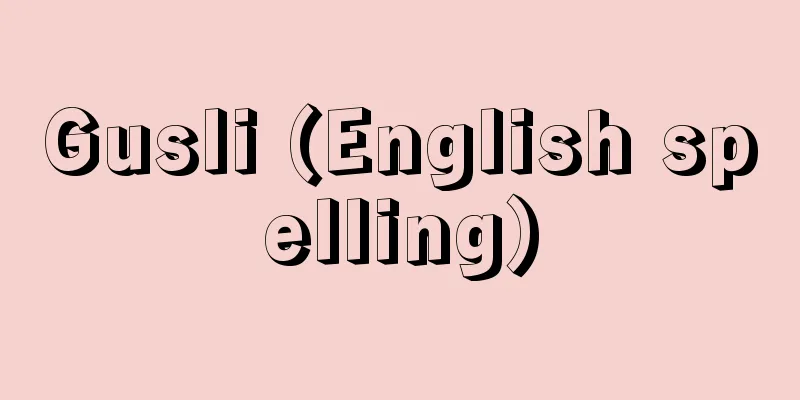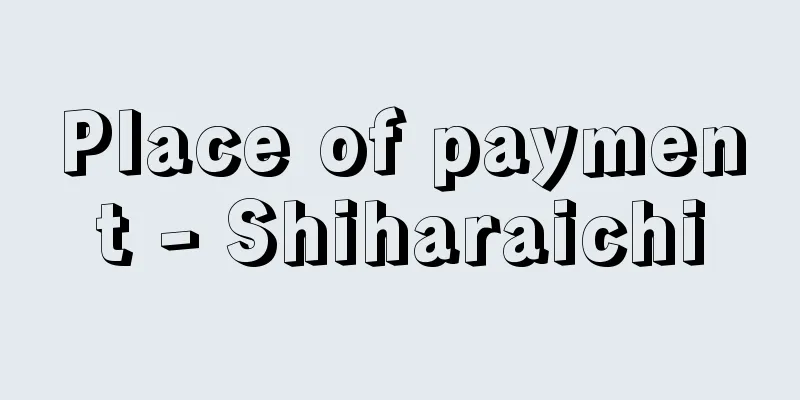Blood Pressure

What is Blood Pressure?Blood pressure is the pressure exerted on the walls of blood vessels as blood flows through a limited space called blood vessels. Blood pressure is classified into arterial blood pressure, capillary blood pressure, venous blood pressure, etc., but normal blood pressure refers to arterial blood pressure. Blood pressure decreases as you go from the aorta to the small arteries and arterioles to the periphery, and venous blood pressure is zero. Blood pressure is indicated by the height of the mercury column. Normal blood pressure (clinic blood pressure) in adults is less than 120/80 millimeters of mercury (mmHg). For example, during systole, when blood is pumped from the heart at rest, there is a pressure that pumps 120 millimeters of mercury, also known as maximal blood pressure. During diastole, when blood is not being pumped from the heart, the aorta proximal to the heart expands and pools the blood that was pumped out during systole, and when this blood is pumped out during diastole, there is a pressure that pumps 80 millimeters of mercury. As we age, the elasticity of blood vessels weakens due to arteriosclerosis, so the aorta expands less and is no longer able to store blood, so the diastolic blood pressure gradually decreases and the difference between systolic and diastolic blood pressure (called pulse pressure) increases. If blood circulation in the brain and other areas decreases due to a decrease in diastolic blood pressure, sufficient oxygen and nutrients cannot be delivered to peripheral cells, so the overall blood pressure is increased to ensure blood flow even during diastole. This is why blood pressure rises as we age, and how geriatric hypertension occurs. Geriatric hypertension refers to high systolic blood pressure alone. For this reason, the blood pressure management target for the elderly (75 years and older) is higher than for younger people. In addition, the balance of the autonomic nervous system becomes poor in the elderly, and many suffer from nocturnal hypertension, where blood pressure rises at night instead of dropping at night. [Motoo Miyakojima August 20, 2020] High blood pressure and arteriosclerosisIf normal blood pressure is 120/80mmHg, that is the blood pressure when one is at rest, and is the lowest blood pressure when one is awake. When a pulse rate of 70 beats per minute at rest increases to 120 beats per minute while running, blood pressure rises in the same way as when a water faucet is turned on and a lot of water is poured out, rising by about 80-100mmHg in systolic blood pressure to 200-220mmHg. Normally, when one is working under stress, it can be assumed that blood pressure is 140-160mmHg. If a person's systolic blood pressure is 150mmHg at rest, it will rise to 250mmHg when he runs. A blood pressure of 120mmHg, converted to water pressure, is 1680 millimeters of water ( mmH2O ) multiplied by the specific gravity of mercury, 14; in other words, the pressure equivalent to water spurting 1.68 meters is exerted on the blood vessel walls with every beat of the blood until death. If the blood pressure rises to 200mmHg ( 2800mmH2O ) while running, the pressure equivalent to water spurting 2.8 meters is exerted on the blood vessel walls. Blood is made up of 40-45% solid components such as red blood cells, white blood cells, and platelets, which is called hematocrit. The remaining 55-60% liquid components also contain proteins, sugars, and fats, and flow through the blood vessels at a speed of about 1 meter per second in a sludgy, debris flow-like state while maintaining osmotic pressure. The higher the blood pressure, the stronger the blood pressure is pressed against the blood vessel walls, causing a dragging force called "shear stress." This damages the blood vessel walls, allowing cholesterol to enter through them and hardening the damaged areas. When blood pressure is high and the stimulation of the blood vessel walls is strong, the blood vessel walls thicken as a defense reaction and arteriosclerosis progresses. If you have high LDL cholesterol or high triglycerides (neutral fats) and low HDL cholesterol, cholesterol will seep into the blood vessel walls and accumulate in relatively large arteries, causing atherosclerosis. Even if cholesterol is not high, high blood pressure will harden small blood vessels and advance arteriosclerosis, causing lacunar infarction. Furthermore, if the arterioles lack nutrients and lose their resistance, small aneurysms will occur frequently, causing cerebral hemorrhage. Thus, hypertension is a risk factor for all types of arteriosclerosis. The management target for hypertension (clinic blood pressure) is less than 130/80mmHg for adults under 75 years old, and less than 140/90mmHg for those 75 years old or older. For elderly people with advanced arteriosclerosis or underlying diseases, individual target blood pressures are set according to their age and condition. [Motoo Miyakojima August 20, 2020] High blood pressure and the autonomic nervous systemThe autonomic nervous system effectively regulates circulation regardless of one's will, sends blood to where it is needed, supplies oxygen and nutrients to cells, and protects the 60 trillion peripheral cells in an individual from cell death. The reason we feel sleepy after eating is that a lot of blood is sent to the digestive organs and tissues that are working due to intestinal peristalsis and the production of digestive enzymes, etc., so the circulation of blood to the brain decreases. The reason why we feel excited and our pulse rate increases after running or drinking is because the lack of oxygen and energy is quickly sent to the peripheral cells to replenish them. When the body cells run out of energy, people feel stressed and secrete stress hormones such as adrenaline and noradrenaline, raising blood pressure and increasing the heart rate. In addition, it breaks down neutral fats stored in fat cells to create energy. In other words, stress hormones constrict blood vessels via α (alpha) 1 receptors, so the blood flow in the capillaries becomes faster. At this time, blood pressure rises in the large and medium arteries, which are the hoses. Stress hormones also act on beta receptors to increase heart rate and heartbeat, raising blood pressure in the same way that opening a water faucet to increase water flow increases. When capillaries constrict, blood pressure rises by the same mechanism as squeezing the end of a hose. In healthy people, if the stress hormones are released by appropriate sympathetic nerve stimulation and the reaction works appropriately, the blood vessels tighten and the increased blood flow caused by the increase in heart rate is sent to peripheral cells, supplying oxygen and energy to peripheral cells and relieving stress. If excessive continuous stress causes the blood vessels to tighten too much or the blood viscosity to increase and flow to become poor, excessive resistance to blood flow in the peripheral arteries occurs, delaying the supply of blood to peripheral cells, stagnating blood flow, and causing cells to become even more stressed and produce stress hormones, creating a vicious cycle. This microcirculatory disorder further increases blood pressure, and large lipoproteins containing neutral fats are delayed in reaching lipoprotein lipase waiting near peripheral cells. This causes high neutral fats and dyslipidemia with low HDL cholesterol. Not only does the uptake of glucose into peripheral cells decrease, but stress also causes insulin to become less effective, raising blood sugar levels and resulting in the so-called metabolic syndrome. Stress hormones are also secreted when you are mentally tense, causing your blood pressure to rise. This is called white coat hypertension, where your blood pressure is normal at home but rises when you go to the hospital because of your nervousness. In addition, humans are under the dual control of the autonomic nervous system, and during the day, the sympathetic nervous system, which is the fighting nerve, becomes tense, causing the secretion of stress hormones such as adrenaline and noradrenaline in large amounts, resulting in high blood pressure. At night, the parasympathetic nervous system becomes tense and sympathetic nervous activity decreases, lowering blood pressure, pulse rate, and allowing you to fall into a peaceful sleep. As sympathetic nervous tension increases early in the morning when we wake up, early morning hypertension occurs, and blood pressure is often high until around 10:00 a.m., during which time strokes and myocardial infarctions occur frequently. Another cause of early morning hypertension is drinking a lot at night, which activates the sympathetic nervous system when we wake up, causing our face to turn pale and our blood vessels to constrict, leading to high blood pressure and strokes at dawn. Some people go for a walk early in the morning without eating, but when you are hungry, you are in a stressful state and break down the neutral fats stored in your fat cells to create energy. Norepinephrine is needed to break down these neutral fats, so going for a walk early in the morning on an empty stomach can be dangerous as it creates a double stress load. It is a good idea to eat something that will give you energy before going for a walk. [Motoo Miyakojima August 20, 2020] Treatment of high blood pressureIt is often said that hypertension is hereditary. Genetic analysis has been conducted, and genes that predispose to hypertension have been elucidated. However, in a survey of residents' health checkups, many people with hypertension had a decreased taste sensitivity to salt. When a hypertensive person was asked to eat a low-salt diet with a salt intake of 7g per day while hospitalized, the taste sensitivity of the tongue to salt recovered within 7 to 10 days, and the previous food tasted salty. Many people who have been eating a high-salt diet since childhood lose the ability to taste salt, and this is thought to be the cause of hypertension. In other words, salt is excreted slowly from the kidneys, and if you take in too much, you will become thirsty and drink a lot of water, so your blood vessels will overflow with water and your blood vessels will become swollen with blood. This causes blood pressure to rise, and the water in the blood vessels will overflow inside and outside the cells, making it easy for edema (swelling) to occur. In addition, stress hormone concentrations are high in visceral obesity, leading to a state of high insulin, which further delays the excretion of salt from the kidneys, making obese people more susceptible to hypertension. If salt intake is high, even slight stress can cause a significant blood pressure increase, making white coat hypertension more likely to occur. Appropriate aerobic exercise such as walking relaxes muscles and improves peripheral microcirculation, so people without knee or other injuries should aim to walk more than 6,000 steps every day. Continuing to exercise improves circulation in the arterioles, regenerates blood vessels, and lowers blood pressure. However, intense exercise performed by athletes is accompanied by stress, which increases blood pressure during exercise and puts a strain on the cardiovascular system, and can lead to an enlarged heart known as a sportsman's heart, or tortuous large blood vessels. Many antihypertensive drugs (medicines) widen peripheral blood vessels and improve circulation, lowering blood pressure by opening the outlet of the hose. However, smoking has the exact opposite effect, with the nicotine in cigarettes stimulating the sympathetic nerves, constricting blood vessels and increasing the pulse rate. Cigarette smoke contains carbon monoxide, which binds to red blood cells that carry oxygen, causing oxygen deficiency in peripheral cells and creating a state of stress, which increases the heart rate and raises blood pressure. Habitual smoking increases the number of red blood cells that carry oxygen, making the blood thicker, similar to the increase in the debris of a mudslide, and the blood cell component increases from 43-45% to more than 46%. This causes red blood cells to stick together to form rouleaux, which impairs the circulation of the capillaries and works to raise blood pressure. Smoking by people undergoing treatment for hypertension reduces the effectiveness of treatment such as medication. In summer, peripheral blood vessels open up to dissipate body heat, lowering vascular resistance and lowering blood pressure, while in winter blood vessels constrict to keep warm, tending to raise blood pressure. Many people with high blood pressure take more blood pressure-lowering medication in winter than in summer. [Motoo Miyakojima August 20, 2020] Low blood pressureLow blood pressure often causes symptoms such as dizziness, general fatigue, difficulty getting out of bed in the morning, etc. It is common in people with chronic fatigue syndrome and guttural heart (a drooping heart seen on a chest X-ray), but most people live long lives and do not need treatment if they have no particular symptoms and do not interfere with daily life. [Motoo Miyakojima August 20, 2020] [References] | |Source: Shogakukan Encyclopedia Nipponica About Encyclopedia Nipponica Information | Legend |
血圧とは血圧とは、血液が、限られた血管というスペース内を血流として流れることで生じる、血管の壁にかかる圧力である。血圧は動脈血圧、毛細血管血圧、静脈血圧などに分類されるが、通常の血圧は動脈血圧をさす。大動脈、小動脈、細動脈と末梢(まっしょう)に行くほど血圧は低くなり、静脈血圧は0である。 血圧は水銀柱の高さで示される。成人における正常血圧(診療室血圧)は120/80ミリメートル水銀柱(mmHg)未満で、この血圧を例にとると、安静時に心臓から血液を拍出する収縮期に、水銀を120ミリメートル噴きあげる圧がかかっている状態で、これを最大血圧ともいう。つぎに心臓から血液の拍出がない拡張期には、収縮期に出た血液を心臓近位の大動脈が膨らんでプールし、これを拡張期に収縮して送り出す際に水銀を80ミリメートル噴きあげる圧がかかっていることを示す。年をとるに従い血管の弾力性が動脈硬化により減弱するため、大動脈の膨らみが減って血液をためられなくなってくるので、拡張期の血圧はだんだん下がり、収縮期と拡張期の血圧の差(脈圧とよぶ)が大きくなっていく。拡張期血圧が下がることにより脳などの血液循環が減ると、十分な酸素や栄養を末梢の細胞に送れなくなるので、全体の血圧を上げて拡張期でも血流が行くようにしている。高齢になると血圧が上がるのはこのためで、老年性高血圧はこうしておこる。老年性高血圧は収縮期血圧だけが高いものをよぶ。このため高齢者(75歳以上)の血圧管理目標値は若い人より高くなる。また高齢者では自律神経のバランスも悪くなり、夜間に下がるはずが逆に上がってしまう夜間高血圧も多い。 [都島基夫 2020年8月20日] 高血圧と動脈硬化通常の血圧が仮に120/80mmHgであるとすれば、それは安静にしているときの血圧で、その人にとっては覚醒(かくせい)時でもっとも低い血圧である。安静時毎分70拍の脈拍が、走って毎分120拍になると、水道の蛇口をひねって水をたくさん出したのと同じように血圧は上昇し、収縮期で約80~100mmHgは上昇し200~220mmHgになっている。通常、緊張して仕事をしているときには140~160mmHgになっていると想定できる。安静時に収縮期血圧が150mmHgあれば、その人は走ったときには250mmHgに上がっていることになる。 120mmHgという血圧は、水圧に直すと水銀の比重14をかけた1680ミリメートル水柱(mmH2O)、すなわち水を1.68メートル噴きあげる圧が血管壁に1拍ごとに死ぬまで休むことなくかかっていることになる。走ったとき200mmHg(2800mmH2O)に上がれば、水を2.8メートル噴きあげる圧が血管壁にかかっていることになる。 血液は赤血球や白血球、血小板という固形成分が40~45%あり、これをヘマトクリットとよぶ。残りの55~60%の液体成分にもタンパク、糖、脂肪などが含まれていて、浸透圧を保ちながらドロドロの土石流のような状態で、秒速1メートル前後のスピードで血管の中を流れている。血圧が高いほどこれが血管壁に強く押しつけられ、「ずり応力」という引きずる力がかかる。それが血管壁を傷つけ、そこからコレステロールが進入したり、傷ついたあとが硬くなる。血圧が高くて血管壁にかかる刺激が強いと、防御反応により血管壁が厚くなり動脈硬化が進む。高LDLコレステロール血症や、トリグリセライド(中性脂肪)が高くHDLコレステロールが低い状態があれば、比較的太い動脈で、コレステロールが血管壁内にしみ込んで蓄積したアテローム性動脈硬化が進む。コレステロールが高くなくても血圧が高いと細い血管は硬くなって細動脈硬化が進み、ラクナ梗塞(こうそく)の原因となる。さらに細動脈では栄養が足りなくて抵抗力がなくなると、小さな細動脈瘤(さいどうみゃくりゅう)が多発して脳出血を発症させる。 このように高血圧はすべての種類の動脈硬化の危険因子になる。高血圧の管理目標値(診察室血圧)は、75歳未満の成人では130/80mmHg未満、75歳以上の高齢者では140/90mmHg未満とされる。高齢者で動脈硬化が進んでいる場合や基礎疾患がある場合には、年齢や病態に応じて個別に目標血圧が設定される。 [都島基夫 2020年8月20日] 高血圧と自律神経自律神経は自分の意思と無関係に循環をうまく調節し、血液を必要なところへ送り、酸素と栄養を細胞に供給して、個体にある60兆個ともいわれる末梢細胞を細胞死から守っている。食後眠くなるのは腸の蠕動(ぜんどう)や消化酵素の産生等のため、働いている消化器や組織に血液をたくさん送っているので、脳へ行く血液の循環が減るためである。走ったり飲酒した後にドキドキ感じて脈拍が増えるのも、不足した酸素やエネルギーを末梢細胞へすばやく送って補充するためである。体細胞にエネルギーがなくなれば人はストレスと感じ、ストレスホルモンであるアドレナリンやノルアドレナリンなどを分泌して血圧を上げ、心拍数を増やす。さらに、脂肪細胞に蓄積された中性脂肪を分解してエネルギーにしている。すなわちストレスホルモンはα(アルファ)1受容体を介して血管を収縮させるので、毛細血管の血流は速くなる。このときホースにあたる大中動脈では血圧が上がっている。またストレスホルモンはβ(ベータ)受容体に作用して心臓の拍動を高めて心拍数を増やすので、水道の蛇口を広げて流水量を増やすのと同じ理屈で血圧を上げる。毛細血管が収縮すると、ホースの出口を握ってやるのと同じ機序(メカニズム)で、血圧が上がる。 健康な人では、適当な交感神経の刺激によりストレスホルモンが出て反応が適切に作用すれば、心拍数の増加で増えた血液は血管が締まることでどんどん末梢細胞に送り込まれ、酸素とエネルギーを末梢細胞に供給でき、ストレスは解消される。過剰な持続的ストレスがかかって血管が締まりすぎたり、血液の粘度があがり流れが悪くなると、末梢動脈の血流に対する過剰な抵抗が生じて、血液の末梢細胞への供給は遅延し、血流が滞り、細胞はますますストレスを高めてストレスホルモンを出す悪循環が生じる。この微小循環障害によって血圧はさらに上がり、中性脂肪を含む大型リポタンパクは末梢細胞近くで待っているリポタンパクリパーゼに達するのが遅れる。このため高中性脂肪となり、HDLコレステロールが低下した脂質異常症を生じる。ブドウ糖の末梢細胞への取り込みが低下するだけでなく、ストレスがインスリンの効き目を悪くする原因となり、血糖値が上がり、いわゆるメタボリックシンドロームが出現する。 ストレスホルモンは精神的に緊張しても分泌され、血圧上昇の原因となる。家では血圧が正常なのに、病院へ行くとドキドキして血圧が上がる白衣高血圧はこれにあたる。 また、人は自律神経の二重支配を受けており、日中は闘争神経である交感神経が緊張してストレスホルモンであるアドレナリンやノルアドレナリンなどの分泌が多く、血圧は高めになる。夜は副交感神経の緊張が高まり交感神経活性は低下して、血圧が下がり、脈拍数は減り、静かな眠りにつくことができる。眠りから覚める早朝から交感神経の緊張が高まるため、早朝高血圧がおこり、朝10時ごろまでは血圧が高いことが多く、この時間帯に脳卒中や心筋梗塞(こうそく)の発症が多発する。さらに早朝高血圧を引き起こす原因には夜の多量飲酒があり、酔い覚め時に交感神経が活性化して顔が青白くなり、血管が収縮して、明け方に高血圧や脳卒中を引き起こす原因になる。 早朝に食事をせずに散歩に出る人がいるが、空腹時はストレス状態にあり、脂肪細胞に蓄積した中性脂肪を分解してエネルギーにしている。この中性脂肪の分解にはノルアドレナリンが必要で、早朝空腹時の散歩はストレスの二重負荷になって危険である。エネルギーになるものを食べてから歩くようにするとよい。 [都島基夫 2020年8月20日] 高血圧の治療よく高血圧は遺伝するといわれている。遺伝子解析が行われるようになり、高血圧になりやすい遺伝子も解明されてきた。しかし、住民健診での調査では、多くの高血圧の人では食塩に対する味覚感受性が低下していた。高血圧の人に入院中に食塩摂取量1日7gに設定した減塩食を食べてもらうと、7~10日で食塩に対する舌の味覚感受性が回復して、以前の食事が塩辛いと感じるようになった。子供のときから塩分の多い食事をしていると塩味がわからなくなる人が多くみられ、これが高血圧の原因になっていると考えられる。すなわち、食塩は腎臓(じんぞう)からの排泄(はいせつ)が遅く、たくさんとり過ぎるとのどが渇いて水分を多く摂取するので血管内は水分であふれ、血管が血液で張った状態になる。このため血圧は上がり、また血管内の水が細胞内外にあふれて浮腫(ふしゅ)(むくみ)となりやすい。また内臓脂肪型肥満ではストレスホルモン濃度も高く、高インスリン状態となり、これが腎臓からの食塩の排泄をさらに遅らせるので、肥満者では高血圧が出現しやすくなる。食塩摂取量が多いとわずかなストレスでも昇圧反応は著明となり、白衣高血圧もおきやすい。 歩行などの適切な有酸素運動によって筋肉の緊張弛緩(しかん)が行われ、末梢の微小循環をよくするので、膝(ひざ)などの故障のない人では毎日6000歩以上歩くことを心がけるとよい。運動を継続することにより細動脈の循環がよくなり、血管も新生されて血圧は下がってくる。しかし、競技者が行う激しい運動にはストレスが伴い、運動中は血圧が上昇し心血管系に負担がかかり、スポーツマンハートといわれるような心臓の肥大や、大血管の蛇行を生じることもある。 血圧降下剤(薬)の多くは末梢血管を広げて循環をよくする薬で、ホースの出口を開く効果により血圧を下げる。ところがこれとまったく逆の作用があるのが喫煙で、たばこ中のニコチンは交感神経を刺激して血管を収縮したり、脈拍数をあげる作用がある。たばこの煙は一酸化炭素を含み、酸素を運ぶ赤血球に一酸化炭素が結合し末梢細胞の酸素不足をきたしてストレス状態を生み、心拍数が増えて血圧を上げる。習慣的に喫煙していると酸素を運ぶ赤血球が増え、血液という土石流の土石部分が増えるのと同様のドロドロ血液となり、血球成分が43~45%から46%以上に増える。そして、赤血球どうしがくっついた連銭形成が生じ毛細血管の循環を悪くして、血圧が上昇する方向に働く。高血圧治療中の人の喫煙は、投薬などの治療の効果を減じることとなる。 夏は体温の熱を放散しようと末梢血管が開き、血管抵抗が低下して血圧は下がり、冬は血管が収縮して保温に働き、血圧が上がる傾向にある。高血圧の人では夏よりも冬に血圧降下剤の量が増える人も多い。 [都島基夫 2020年8月20日] 低血圧低血圧では、めまい、全身倦怠(けんたい)感、朝なかなか離床できないなどの症状が、往々にして現れる。慢性疲労症候群、滴状心(胸部X線検査で心臓がたれ下がったようにみえる)の人に多いが、多くは長命であり、とくに症状がなく、日常生活に支障がなければ治療の必要はない。 [都島基夫 2020年8月20日] [参照項目] | |出典 小学館 日本大百科全書(ニッポニカ)日本大百科全書(ニッポニカ)について 情報 | 凡例 |
Recommend
Enzelii - Enzelii (English spelling)
A port city on the Caspian Sea in northern Iran. ...
Bulbochaete
…Sexual reproduction is by eggs and sperm, and as...
Daniel, Samuel
Born 1562, near Taunton, Somerset [died] October 1...
Rhinosciurus laticaudatus (English spelling)
…the crowns of the teeth are small, and their che...
Late rice - Oshine
(It is said to be a sound change of "osoi ne&...
Ibas - Ibas
…The “Tria Kephalaia” (Three Chapters) refers to ...
Hilux - Hyrax (English spelling)
A general term for animals belonging to the order...
Thalētas (English spelling)
... Historically, songs and dances accompanied by...
Yaesu
A district in Chuo Ward, Tokyo, east of Tokyo Sta...
Tail hair - Cercus
A pair of projections that appear on the tergite o...
Disposable income
Income from all sources for the whole country or e...
gnōsis (English spelling) gnosis
…a religious and ideological movement that arose ...
Arginase - Arginase (English spelling)
An enzyme that hydrolyzes arginine into ornithine...
Anotho, AAG - That's it
…He became a member of the National Assembly in 1...
Stresemann - Gustav Stresemann
German politician. Before World War I, he disting...


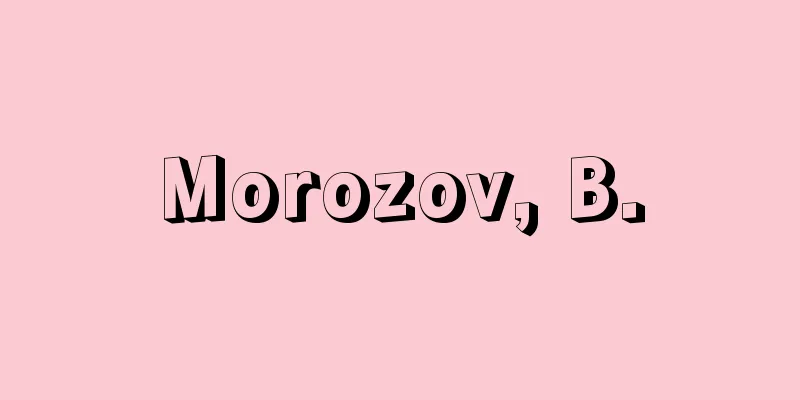
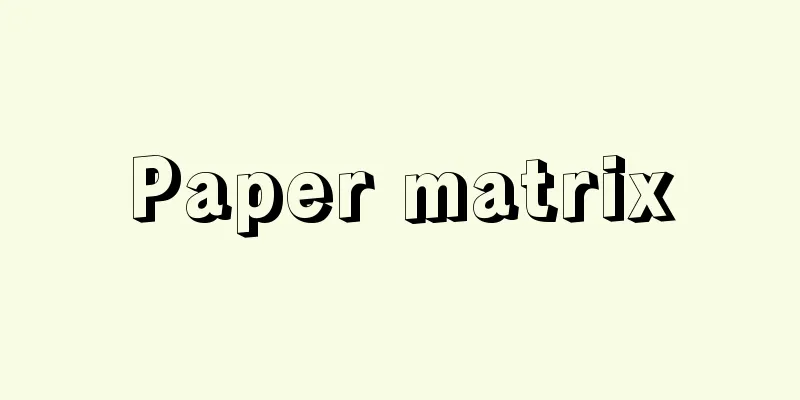
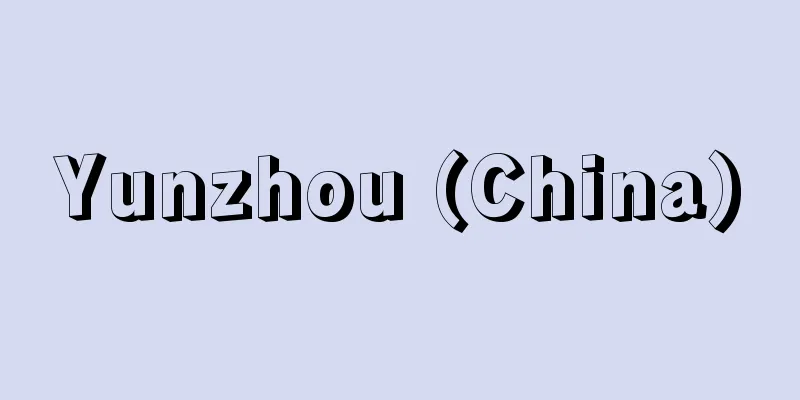
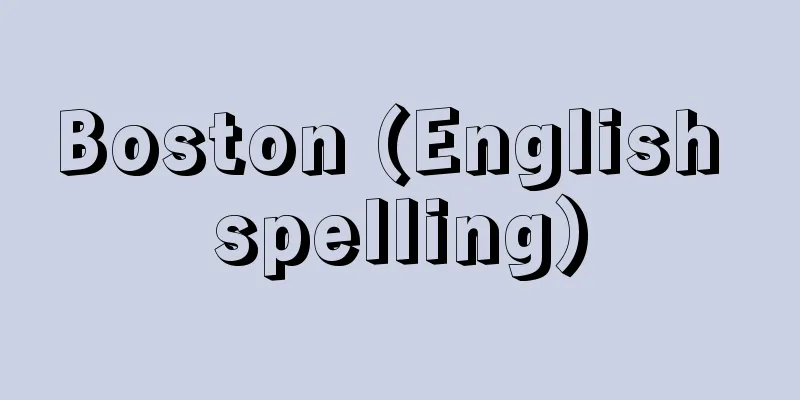
![Yoshioka [Hot Springs] - Yoshioka](/upload/images/67cd1976f37a0.webp)
